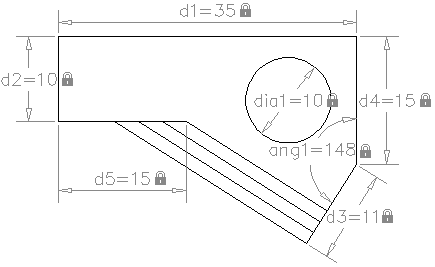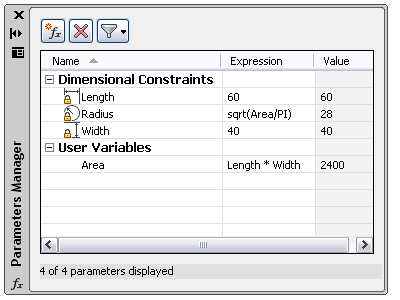Dimensional constraints control the size and proportions of a design. They can constrain the following:
For example, the following illustration includes linear, aligned, angular, and diameter constraints.

If you change the value of a dimensional constraint, all the constraints on the object are evaluated, and the objects that are affected are updated automatically.
Also, constraints can be added directly to segments within a polyline as if they were separate objects.
Compare Dimensional Constraints with Dimension Objects
Dimensional constraints are different from dimension objects in the following ways:
If you need to plot dimensional constraints or use dimension styles, you can change the form of a dimensional constraint from dynamic to annotational. See Apply Dimensional Constraints for more detail.
Define Variables and Equations
With the Parameters Manager, you can define custom user variables that you can reference from within dimensional constraints and other user variables. The expressions that you define can include a variety of predefined functions and constants.

For more information about using variables and equations with constraints, see Constrain a Design with Formulas and Equations